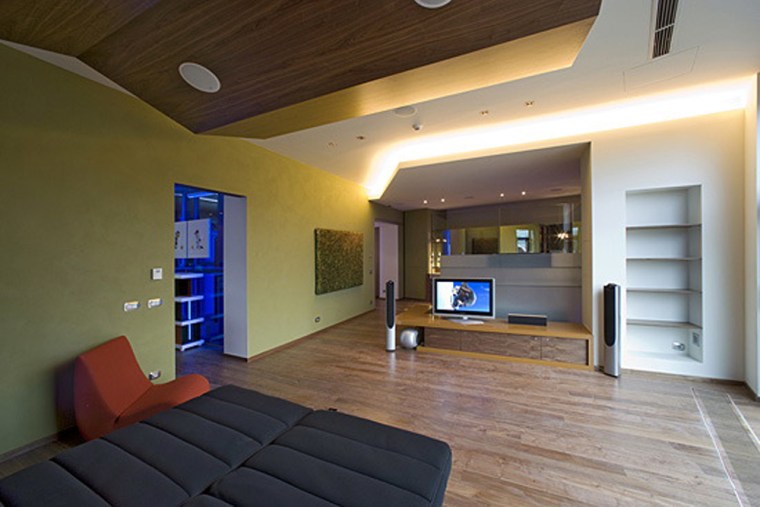It's Monday morning. The alarm sounds but then, after a verbal command from you, lets you snooze. Your mattress, however, is no such pushover. It nudges you awake, using sensors to help push you out of bed. Fifteen minutes later, you're out of the shower, slightly bronzer thanks to your in-bathroom tanning lamp. As you brush your teeth, the mirror informs you it's sweater weather, lists your morning appointments, and suggests a back-road route to work because the usual drive is congested. As you leave, the fridge recognizes you used the last of the milk for your morning coffee and orders a delivery from the grocery store.
This may sound like science fiction, but companies have already developed the tools to make it reality. So says Peter Bongers, chief executive and co-founder of Living Tomorrow, a company that since 1991 has brought together top technology, consumer goods, and design firms to develop innovative products and then exhibit them to the public in specially designed museums.
Mind you, that future may not be realized for another decade or so in the United States, Bongers says. But his company will give the public a glimpse of it much sooner.
By next year, Living Tomorrow will break ground in San Jose, Calif., for its first U.S. museum. The 40,000-square-foot facility is scheduled to open in 2009. Bongers anticipates the project will cost $53 million. As with past installations, the San Jose museum largely will be funded by companies hoping to use it as a test kitchen for their upcoming, often out-there, products. "We enable them to innovate much better," says Bongers.
Once opened, the San Jose museum will offer $10 tours, showing off various product prototypes and rooms designed for the future. Visitors will be able to weigh in on products via handheld voting devices. They will also be able post opinions online. Roughly 300,000 people each year have visited past installations, Bongers says.
The first Living Tomorrow exhibit debuted in Brussels in March, 1995. Microsoft founder Bill Gates spoke at the opening. "There is no doubt that the way we live will be different in the future," Gates said at the time. "The advances in PC technology and low-cost communications are bringing a revolution."
(MSNBC.com is a Microsoft-NBC Universal joint venture.)
Microsoft was one of the 300 companies to participate in prior Living Tomorrow exhibits, says Bongers, who's still lining up companies that will work on the San Jose project. Past participants have included DuPont, Hewlett-Packard, Unilever, and LG.Philips LCD.
Products tend to fall in several categories, including home, office, transportation, banking, stores, health services, bars and restaurants, and energy-related. Roughly 80 percent of the products exhibited in prior installations in Brussels and Amsterdam were within a year of arriving to market. The other 20 percent are products that could be as much as a decade away from development.
Past exhibits have included "intelligent bathroom mirrors" that could measure users' height, weight, and, with the help of a hidden scale in the floor, calculate a person's body-mass index. The mirror could then weigh the number against the healthy range for the user and alert the listed primary-care physician to any problems. The feature, thankfully, also could be turned off.
Judging from current trends, Bongers expects that the exhibit will feature many so-called clean technology products that conserve energy and don't create much carbon waste. "We want to help make people aware of what's out there and generate feedback," says Bongers. After all, to build the products hitting the market tomorrow, companies need to know what people want today.
